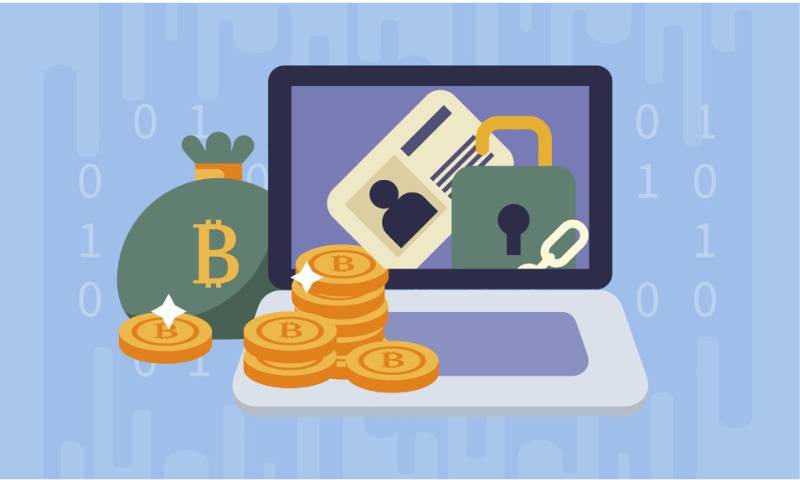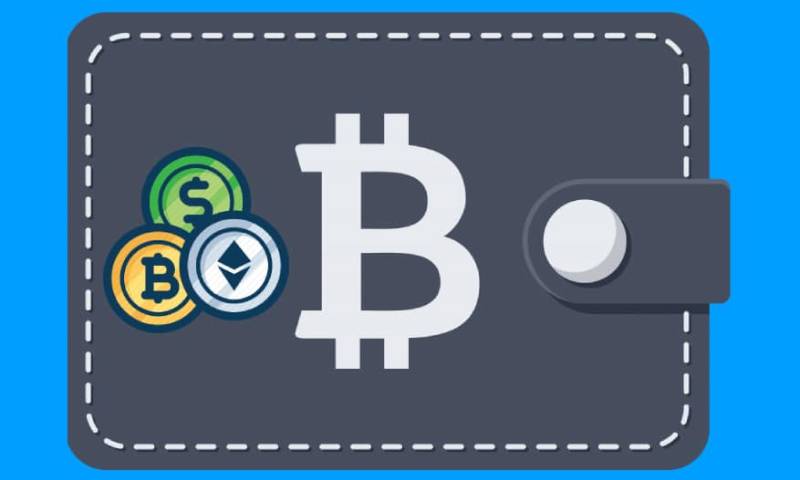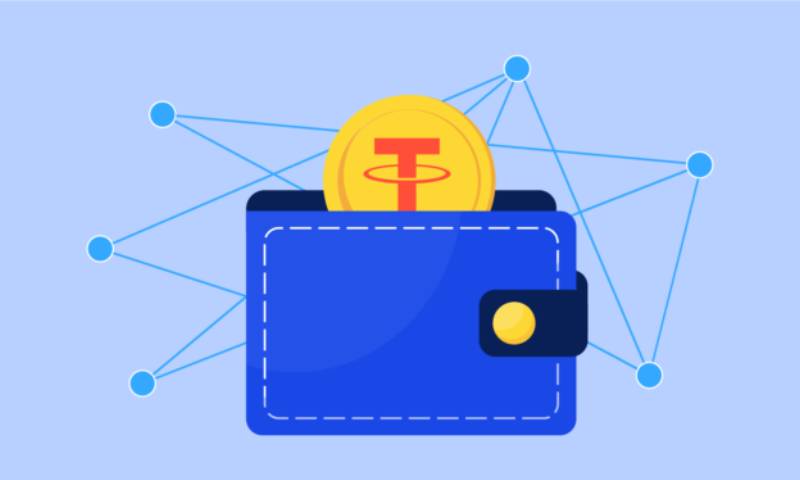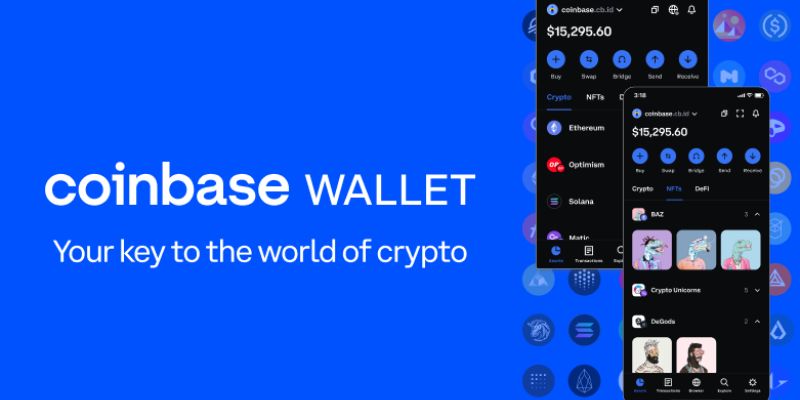Diving into the world of cryptocurrencies can feel like uncharted territory. Imagine finding a beginner-friendly desktop crypto wallet that not only guards your digital coins but also feels like a stroll through your favorite park. GtkWidgetHarness can’t wait, GtkPrintOperation won’t print, but here’s one thing I know: managing your digital currency will soon become your next great skill. This guide is your launchpad into digital finance, breaking down complex tech into easy steps. From buying your first bitcoin to securing your digital fortune, let’s make your crypto journey both safe and simple.
Understanding Desktop Digital Wallets: A Primer
Unpacking the Desktop Wallet Setup Guide
When you start, desktop wallet setup can seem tough. What if I told you it’s like making a new email account? Yes, it’s that easy. That’s because easy-to-use crypto software for PC is designed with you in mind.
First, you pick a wallet. “Which is best?” you might ask. Look for a cryptocurrency wallet for beginners. These have the desktop digital wallet features you’ll need, without the stuff you don’t.
Next, you install the software on your PC. Just a few clicks, and you’re all set. The newbie guide to crypto wallets always helps. These guides walk you through, step by step.
The last part? Backing up your wallet. This might be the most crucial step. It’s your safety net if things go wrong. So, write down your secret “seed phrase” and keep it safe. Think of it as the key to your digital treasure chest.
Now, onto managing your coins. Secure cryptocurrency management should be simple. So a wallet with a simple interface crypto vault is key. This will help you avoid mistakes and keep your crypto safe. Using a PC-based blockchain wallet comes with perks. Like tracking your coins, and sending or receiving them easily.
Remember, this is your money, your rules. Non-custodial wallets for starters, like these, give you full control. That means no middleman. Just you and your crypto, as it should be.
Distinguishing Between Software and Hardware Wallets
Deciding between software wallets vs hardware wallets is next. Picture your easy crypto wallets for desktop users as a house where your crypto lives. Software wallets are like a home with smart locks. They keep your crypto safe and are always there for you.
On the other hand, hardware wallets are like security vaults. They’re not as quick to open but add an extra layer of protection.
So why pick software wallets? They’re right there on your desktop, always handy for daily use. Simple to set up and with essential features in a beginner’s crypto wallet, they’re a solid choice. Plus, for day-to-day crypto needs, software wallets shine.
Hardware wallets, while great for long-term storage, might be too much for now. Think of them as something to look into as you get more into crypto.
To wrap up, think about what you’ll do most with your crypto. Will you buy and hold, or trade often? Your answer helps you pick. User-friendly desktop wallet security starts with the right choice.
Choosing a desktop wallet for crypto is your first step in your crypto journey. Go with one that’s safe, easy, and just right for your needs. And remember, you can change your mind later, as you learn and grow.
That’s the basics of desktop wallets. Straightforward, right? With this guide, and your newfound knowledge, you’re ready to join the world of digital currency with confidence. Welcome to your safe haven!
The Core Features of User-Friendly Crypto Wallets
Simple Interface and Intuitive Crypto Wallet Applications
Have you started using a cryptocurrency wallet for beginners? You know, one that doesn’t make your head spin? If you’re new to crypto, a simple interface crypto vault is your best friend. These easy-to-use crypto software for PC options sweep away the confusion. They make securing and using your digital coins easy-peasy.
Remember how you felt the first time you tried to use a VCR? Perplexed, right? Well, the best newbie guide to crypto wallets will never do that to you. They guide you like a friend. You click here, you tap there, and voila! You’re in control. No degrees in rocket science needed.
Now, what about something called non-custodial wallets for starters? These wallets let you be the boss of your own coins. They never hold onto your coins for you. This means no one else can touch your money without your say-so.
Desktop Wallets with Multi-Currency Support
Moving on, let’s chat about desktop wallets with multi-currency support. These are like having a big wallet that fits all kinds of money. Not just dollars and cents, but euros, pounds, yen, you name it! Or in our world, Bitcoin, Ethereum, and many others. These desktop digital wallet features let you keep all your coins in one neat place.
Don’t have just one type of digital coin? No problem! Desktop wallet vs mobile wallet, which is handier? Many say desktop, because it feels safer and it’s easier to manage. You can see your coins laid out on a bigger screen. Plus, you don’t have to worry about losing your phone and your coins with it.
Remember, picking a wallet is like choosing a pet. You want one that fits into your life nicel and calmly. It should have essential features in a beginner’s crypto wallet. Think of it like training wheels when you first learned to ride a bike. You need support, guidance, and… oh yeah, the freedom to have a blast exploring the crypto world!
So, when you’re ready to choose a desktop wallet for crypto, think about these things. What works for you? What feels right? You’re not just picking a tool; you’re picking your new digital home. Make sure it feels like a place where you can kick back, relax, and enjoy the crypto ride.
Fortifying Your Digital Assets: Essential Security Practices
Mastering Private Key Management and Seed Phrases
Private keys are like the keys to your house. Keep them safe, and you keep your crypto safe. A seed phrase is a group of words that act like a backup key. With it, you can get back into your wallet if something goes wrong.
Here’s how to keep them secure:
- Write down your seed phrase on paper.
- Store it someplace safe, like a locked box or a safe.
- Never share it. Not even with friends.
When you set up any easy-to-use crypto software for PC, it makes a private key for you. Think of this as a password. But it’s a special kind, one that should not be shared. The private key lets you access and send your digital money. Without it, you’re locked out. The seed phrase is your backup; it’s a list of words that grants access to your funds if you lose your key.
Step-by-Step Crypto Wallet Backups for Novices
Backup is the bread and butter of secure cryptocurrency management. Do it right, and sleep tight. Miss it, and you might lose your digital dough. Here’s a simple way to backup your desktop digital wallet:
- Open your wallet and find the backup section.
- Follow the prompts to start the backup process.
- Choose a password for your backup file. Make it hard to guess.
- Save the backup to a USB drive or another safe place.
- Test the backup. Make sure it works.
Creating backups of your desktop digital wallet features is not only smart; it’s essential. When you make a backup, your crypto storage solutions for novices ensure that your money is safe, even if your PC fails. Remember, a hardware failure or a virus can wipe out your digital wallet. But if you have a backup, you can restore everything.
Every beginner’s tutorial on crypto security will tell you: back it up! Just like photos or important files, you don’t want to lose your crypto. Your backup can come in the form of files that you store in multiple safe places away from your computer. Think USB drives, hard drives, or even cloud storage that is encrypted and secured.
When choosing a desktop wallet for crypto, look for one that walks you through this process. You want a user-friendly desktop wallet security system that won’t leave you puzzled. Often, the best newbie guide to crypto wallets will have easy steps to follow for this process.
To wrap it up, the keys to a secure experience with cryptocurrency wallet for beginners include vigilant private key management and reliable wallet backups. Both of these steps are your armor against losing access to your assets. With a noob-friendly crypto wallet option, you’ll find that managing your digital currencies is not just safe. It’s also stress-free.
Transitioning to Non-Custodial Solutions: Why and How
Choosing a Desktop Wallet for Crypto: Non-Custodial vs Custodial
So you’ve dived into crypto – welcome! Here’s why non-custodial wallets matter. With custodial wallets, a company holds your keys. Non-custodial ones mean you’re in charge. Which is safer? If the company’s servers go down or they close up shop, your crypto with a non-custodial wallet is still yours. It’s that simple – and critical.
When picking a wallet, look for one that’s easy-to-use for PC users and tailored for cryptocurrency wallet beginners. You want one with clear desktop digital wallet features that aid secure cryptocurrency management. The simpler the interface of the crypto vault, the better. Ease is king, especially when you’re new.
Simplifying Crypto Transactions for New Users on Desktop Apps
Now, using these wallets should be a breeze, too. Desktop apps for managing digital currencies should feel like any other software you’re used to. But, with a secure spin, of course. The goal is to make crypto storage solutions for novices not just safe but super easy to navigate.
Your first steps will include a desktop wallet setup guide that is noob-friendly, right there in the app. Top beginner crypto wallets for desktop often have a newbie guide to crypto wallets embedded. Look for PC-based blockchain wallet options that offer this.
The crypto transaction process on these apps should cut down confusion as well. Whether it’s sending or receiving crypto, the steps should be clear-cut. A simple interface helps here, one that guides you through with prompts.
Remember, diving into non-custodial wallets for starters doesn’t have to be complex. With the right beginner’s tutorial on crypto security and a straightforward desktop wallet vs mobile wallet explanation, you’ll feel right at home, quickly.
In short, choose a wallet that makes you think “This is easy!” From the crypto wallet backups for novices to the intuitive crypto wallet applications, these are your tools for success. Control your digital wealth with confidence, one click at a time.
To wrap things up, we dived into the world of desktop digital wallets, demystifying how they work and setting them up. We explored the differences between software and hardware wallets, ensuring you can make informed choices. We looked at user-friendly features, like easy interfaces and multi-currency support, vital for anyone using crypto wallets.
We can’t ignore security, a major part of managing digital assets. I showed you how to handle private keys and seed phrases, and how to backup your crypto wallet step by step—it’s easier than you think! Lastly, we talked about why non-custodial wallets are smart picks and how they simplify your crypto experience.
Remember, managing your digital coins should be secure and straightforward. Choose the right wallet, keep your keys safe, and you’re set. With these tips, you’re well on your way to becoming a savvy crypto user with peace of mind. Happy trading!
Q&A :
What is a beginner-friendly desktop crypto wallet?
A desktop crypto wallet is a software application that resides on a computer’s desktop and allows users to store, manage, and transact with cryptocurrencies in a secure environment. Beginner-friendly versions are designed with simplicity and ease of use in mind, providing intuitive interfaces, straightforward setup processes, and basic security features to help new users navigate the world of digital currencies without overwhelming them.
How do I choose a desktop wallet if I’m new to cryptocurrency?
For those new to cryptocurrency, selecting a desktop wallet involves considering several factors:
- Ease of Use: Look for wallets with simple layouts and clear instructions.
- Security: Ensure the wallet has basic security features such as password protection and backup options.
- Reputation: Opt for wallets developed by reputable companies with positive user reviews.
- Compatibility: Check if the wallet supports the cryptocurrencies you’re interested in.
- Customer Support: Beginner-friendly wallets should offer accessible customer service in case you have questions or issues.
Are beginner-friendly desktop crypto wallets secure?
While beginner-friendly desktop crypto wallets prioritize ease of use, they also incorporate essential security features such as encryption, private keys that are stored on the user’s device rather than online, and two-factor authentication. As with any wallet, it’s vital for the user to follow recommended security practices like regular backups, using strong, unique passwords, and updating software to maintain a high level of security.
Can I use a desktop crypto wallet on multiple devices?
Most desktop wallets are designed to be used on the computer they were installed on, but some wallets offer multi-platform support. This can include compatibility with various desktop operating systems or syncing with mobile wallet counterparts. Portability can be limited, so users who wish to access their wallet from multiple devices should check for this feature before choosing a wallet.
Is it possible to switch from a beginner wallet to a more advanced one later on?
Yes, it is possible and quite common to switch from a beginner-friendly wallet to a more advanced one as you become more comfortable and experienced with cryptocurrencies. When you decide to make a switch, you can transfer your assets by sending them to your new wallet’s addresses. Always ensure that you understand the new wallet’s features and security measures and conduct a small transaction first to confirm everything works correctly.






